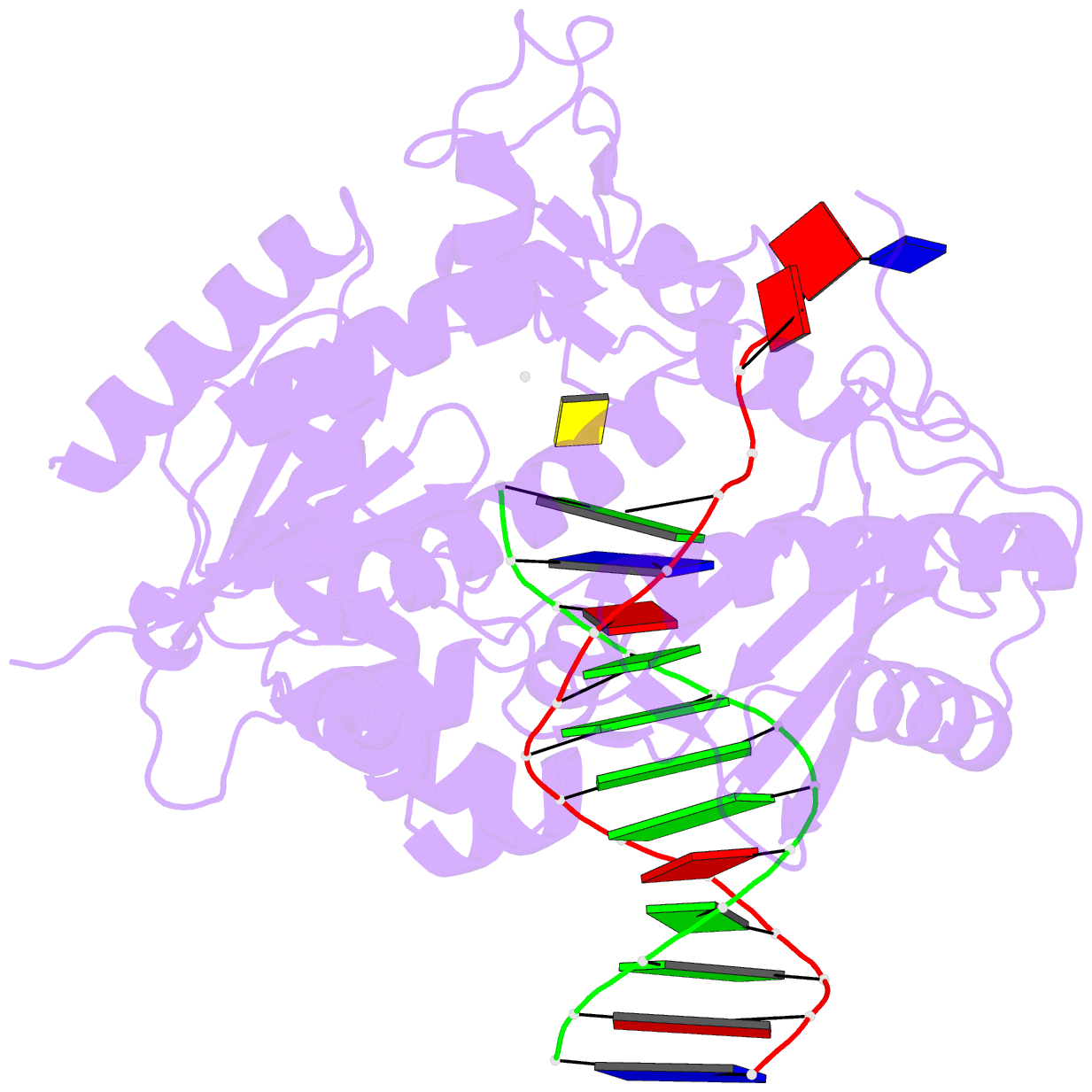Summary information and primary citation
- PDB-id
- 3osp; SNAP-derived features in text and JSON formats;
DNAproDB
- Class
- transferase-DNA
- Method
- X-ray (2.5 Å)
- Summary
- Structure of rev1
- Reference
- Nair DT, Johnson RE, Prakash L, Prakash S, Aggarwal AK (2011): "DNA synthesis across an abasic lesion by yeast REV1 DNA polymerase." J.Mol.Biol., 406, 18-28. doi: 10.1016/j.jmb.2010.12.016.
- Abstract
- Abasic (apurinic/apyrimidinic) sites are among the most abundant DNA lesions in humans, and they present a strong block to replication. They are also highly mutagenic because when replicative DNA polymerases manage to insert a nucleotide opposite the lesion, they prefer to insert an A. Rev1, a member of Y-family DNA polymerases, does not obey the A-rule. This enzyme inserts a C opposite an abasic lesion with much greater catalytic efficiency than an A, G, or T. We present here the structure of yeast Rev1 in ternary complex with DNA containing an abasic lesion and with dCTP as the incoming nucleotide. The structure reveals a mechanism of synthesis across an abasic lesion that differs from that in other polymerases. The lesion is driven to an extrahelical position, and the incorporation of a C is mediated by an arginine (Arg324) that is conserved in all known orthologs of Rev1, including humans. The hydrophobic cavity that normally accommodates the unmodified G is instead filled with water molecules. Since Gs are especially prone to depurination through a spontaneous hydrolysis of the glycosidic bond, the ability of Rev1 to stabilize an abasic lesion in its active site and employ a surrogate arginine to incorporate a C provides a unique means for the "error-free" bypass of this noninstructional lesion.





